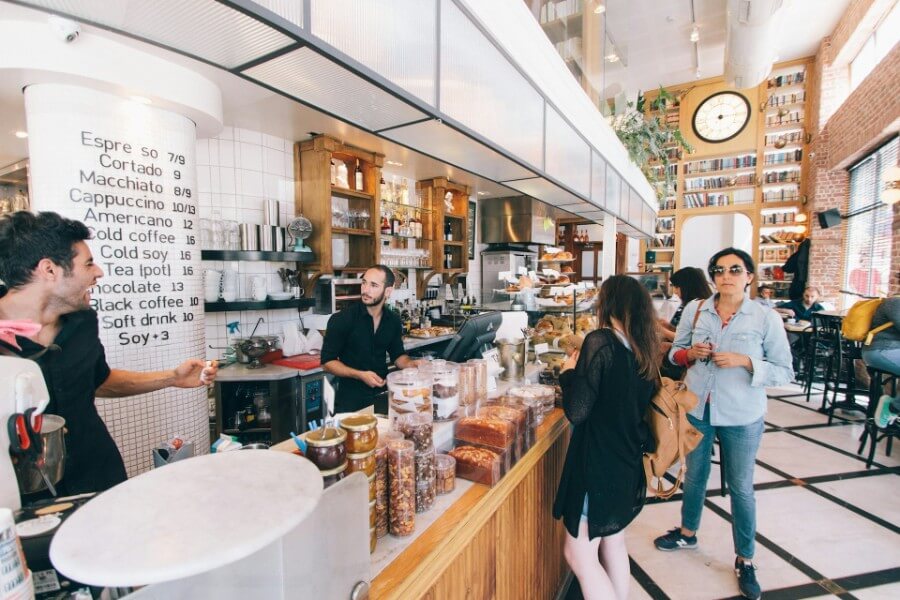
In-store marketing is essential for attracting and captivating customers. In today’s era of online shopping dominance, physical stores face the challenge of standing out in a market. By implementing in-store marketing tactics, businesses can create shopping experiences that boost sales and foster brand loyalty.
Crafting a Welcoming Store Layout
A well-thought-out store layout forms the cornerstone of in-store marketing. When customers enter a store, they should feel invited to explore. One effective way to achieve this is by establishing pathways that guide them through the store. Placing displays and promotional signs along these paths can capture customers’ attention and encourage them to discover products.
Another key aspect is designing displays that effectively showcase products. Utilizing varying heights and angles, vibrant colors, unique decorations, and proper lighting can enhance the appeal and spark interest among potential buyers. Furthermore, maintaining a clutter-free environment aids customers in navigating without feeling overwhelmed.
Optimizing Product Placement
Product placement significantly influences customer purchasing decisions. By studying how customers behave and their preferences, stores can strategically position products to catch the eye and encourage purchases. Placing items near entrances or checkout counters prompts impulse buys as customers wait in line or walk by. Similarly, grouping products together can tempt customers to buy more. Offering enticing deals alongside related items gives shoppers a reason to consider purchasing them.
Taking Advantage of Technology for Personalization
The rise of technology has provided retailers with tools to personalize the shopping experience for their clientele. Tailoring messages on signs based on demographics or store location allows businesses to reach their target audience effectively. For instance, displaying offers on screens near areas can influence purchase decisions.
Another useful tool is shopper tracking technology that analyzes customer behavior in the store. By understanding where customers spend their time or how they move around, retailers can optimize product placements for results. Moreover, using apps to provide discounts and recommendations enhances the overall shopping journey.
Captivating Shoppers with Interactive Experiences
In a world inundated with ads, engaging shoppers through experiences helps brands stand out from the competition. Incorporating touch screens or augmented reality displays lets customers explore product features or virtually try on items.
This interactive approach not only entertains and educates shoppers but also helps them build a bond with the brand. Additionally, organizing demonstrations or workshops featuring experts enhances engagement by sharing insights and real-life experiences. Customers value the chance to ask questions, gain knowledge, and see how products can meet their needs.
Smooth Checkout Experience
The checkout process plays a role in making an impression on customers. Lengthy queues, payment procedures, or issues with gift cards can easily lead to frustration and negatively impact the overall customer experience. To enhance efficiency, businesses should invest in effective point-of-sale systems that reduce waiting times. Providing payment options such as payments or mobile wallets aligns with changing consumer preferences for convenience and security.
Post Purchase Interaction
Customer engagement should extend beyond the checkout stage; interactions after purchase offer companies an opportunity to nurture long-term relationships. Sending personalized thank you messages offering purchase deals or inviting customers to join loyalty programs effectively expresses gratitude and encourages repeat business. Furthermore, utilizing customer data gathered during in-store transactions enables businesses to customize follow-up marketing strategies based on preferences.
Investing in Effective Staff Training
To enhance customer satisfaction and boost the chances of purchases, personalized emails containing product recommendations that cater to each individual’s needs are beneficial.
When aiming to deliver in-store experiences, businesses should prioritize the effective training of their staff members. Having an informed and friendly team can make a difference in guiding customers around the store, addressing inquiries, and suggesting suitable products.
Investing in Effective Staff Training
The training initiatives should emphasize establishing a customer-focused environment where every interaction is characterized by warmth and a genuine willingness to help. Through role-playing sessions, continuous updates on product knowledge, and opportunities for learning, employees can enhance their skills and confidence levels, resulting in seamless interactions with customers.
In Summary
Effective in-store marketing plays a role in attracting and engaging shoppers at touchpoints. By designing an inviting store layout, strategically positioning products to influence purchasing decisions, utilizing technology for experiences offering engagements, streamlining the checkout process, implementing post-purchase engagement tactics, and investing in staff development. Businesses can drive sales growth and cultivate lasting relationships with customers. In today’s retail landscape, a well-executed in-store marketing strategy is paramount for success.